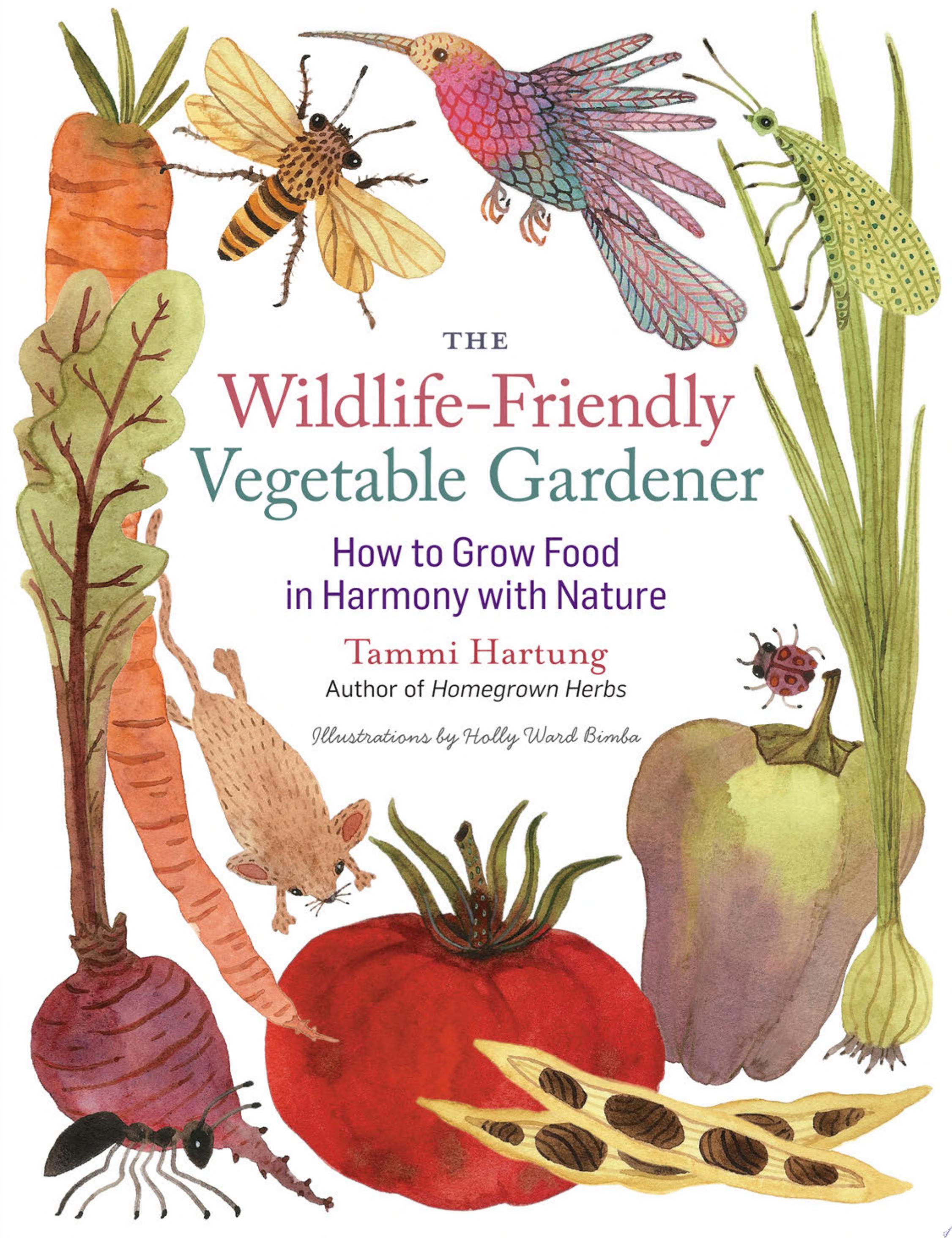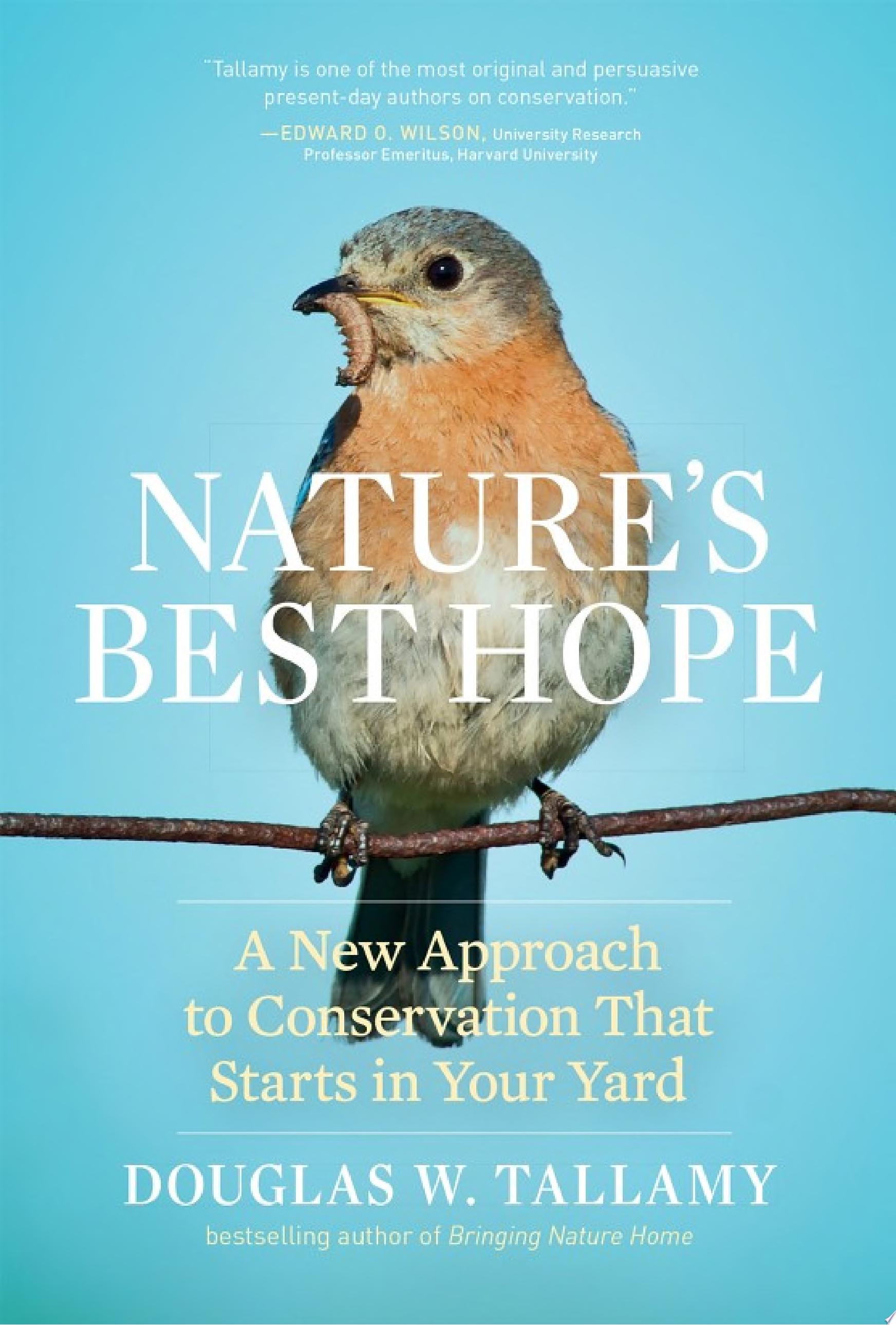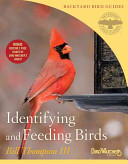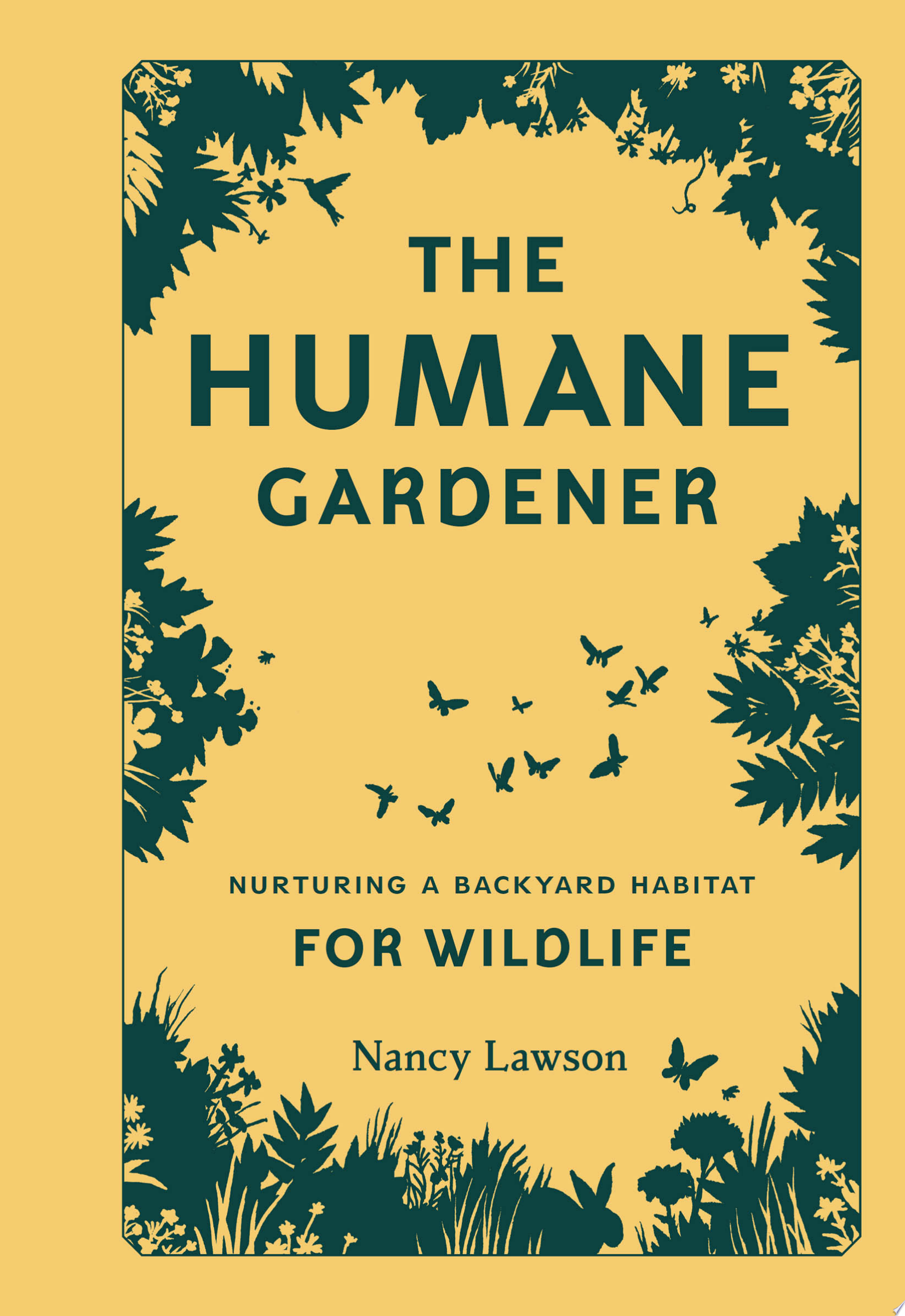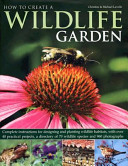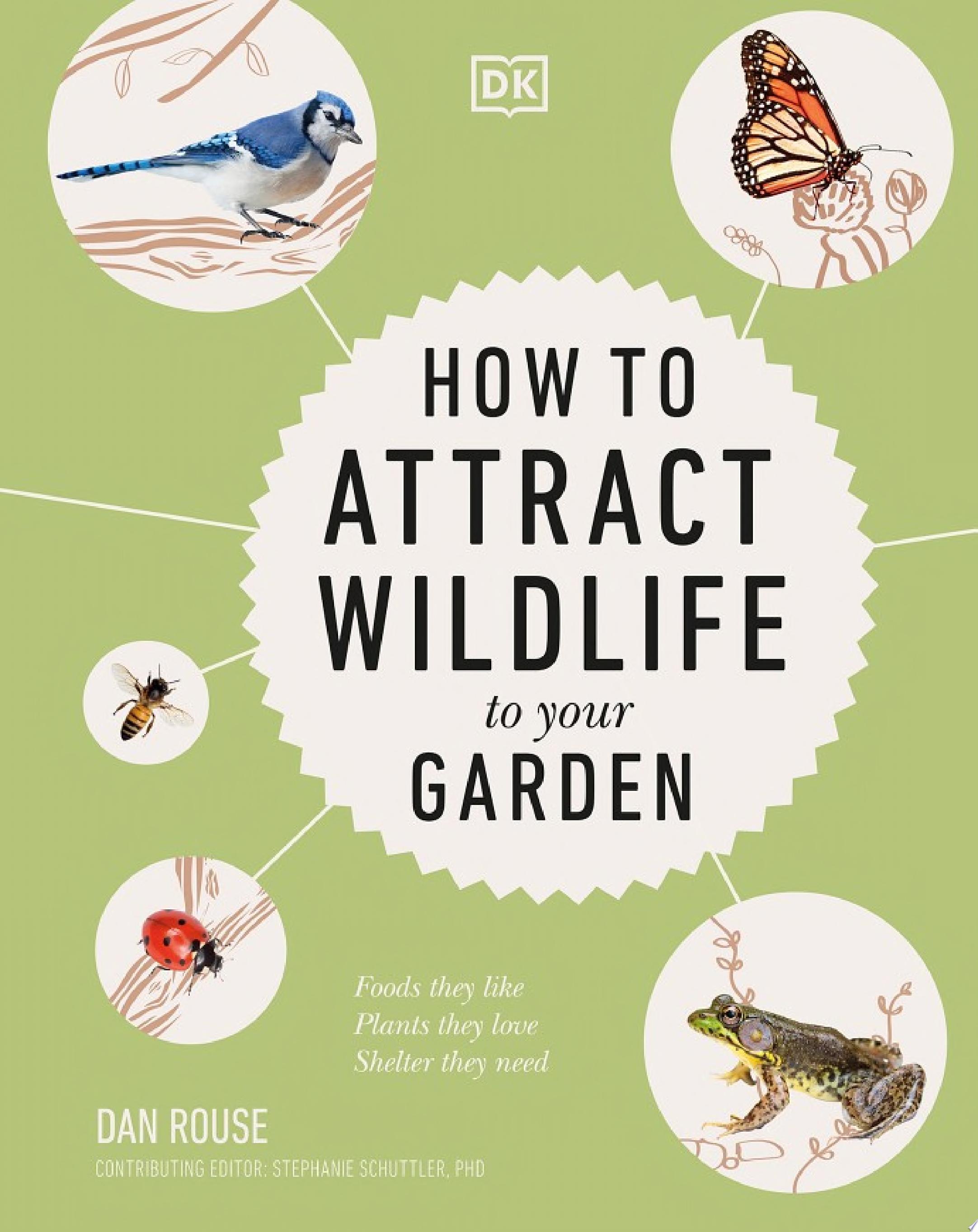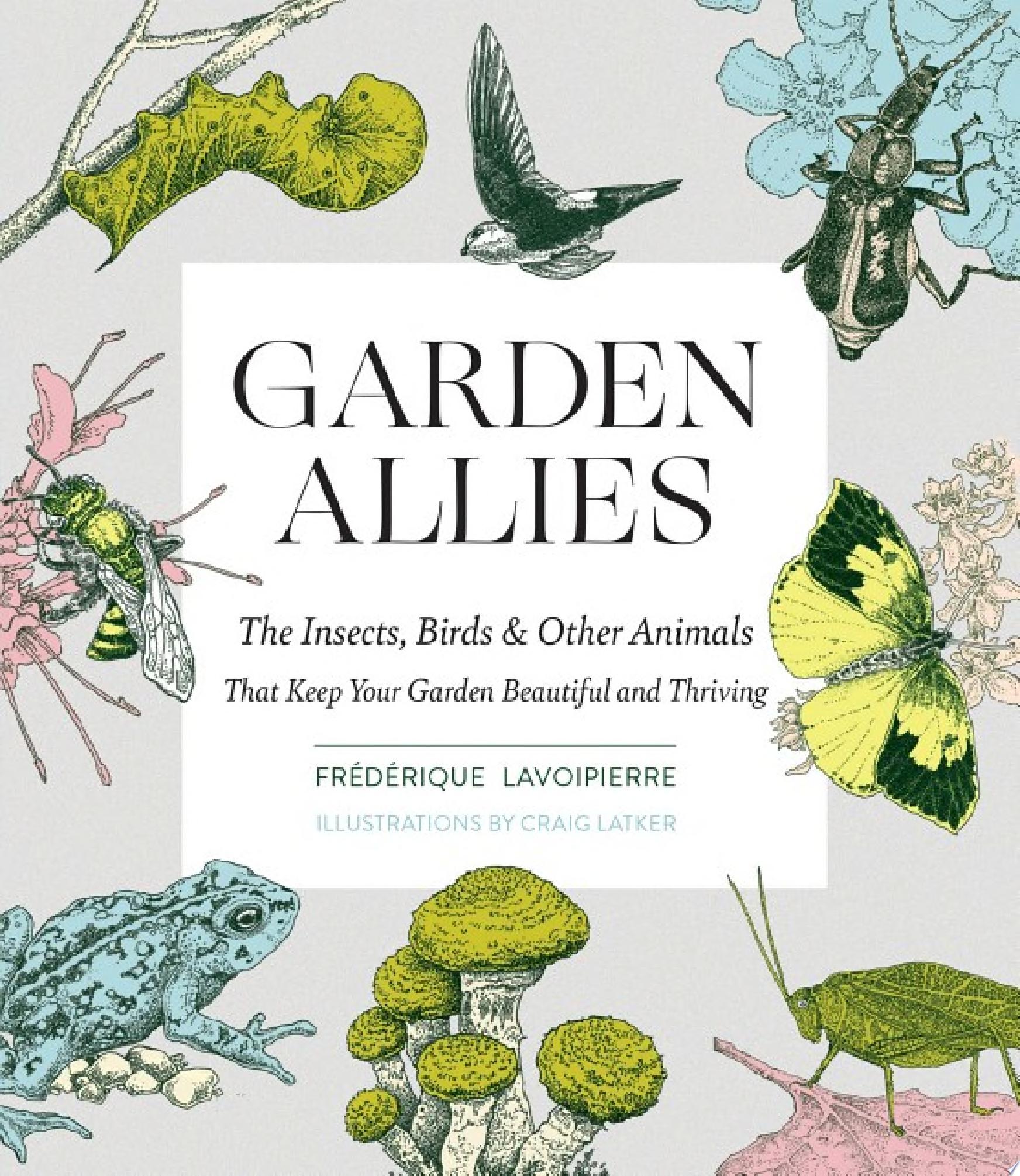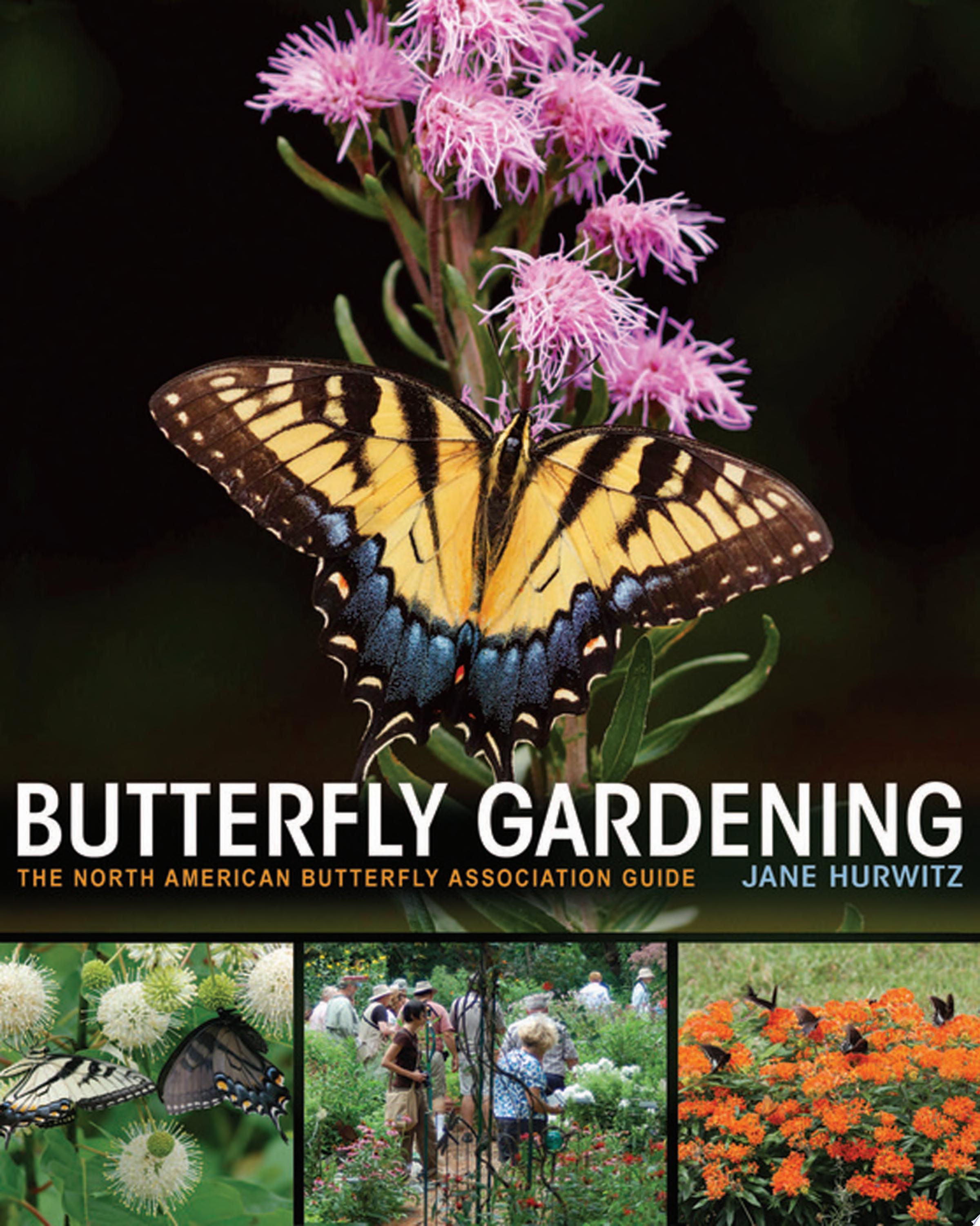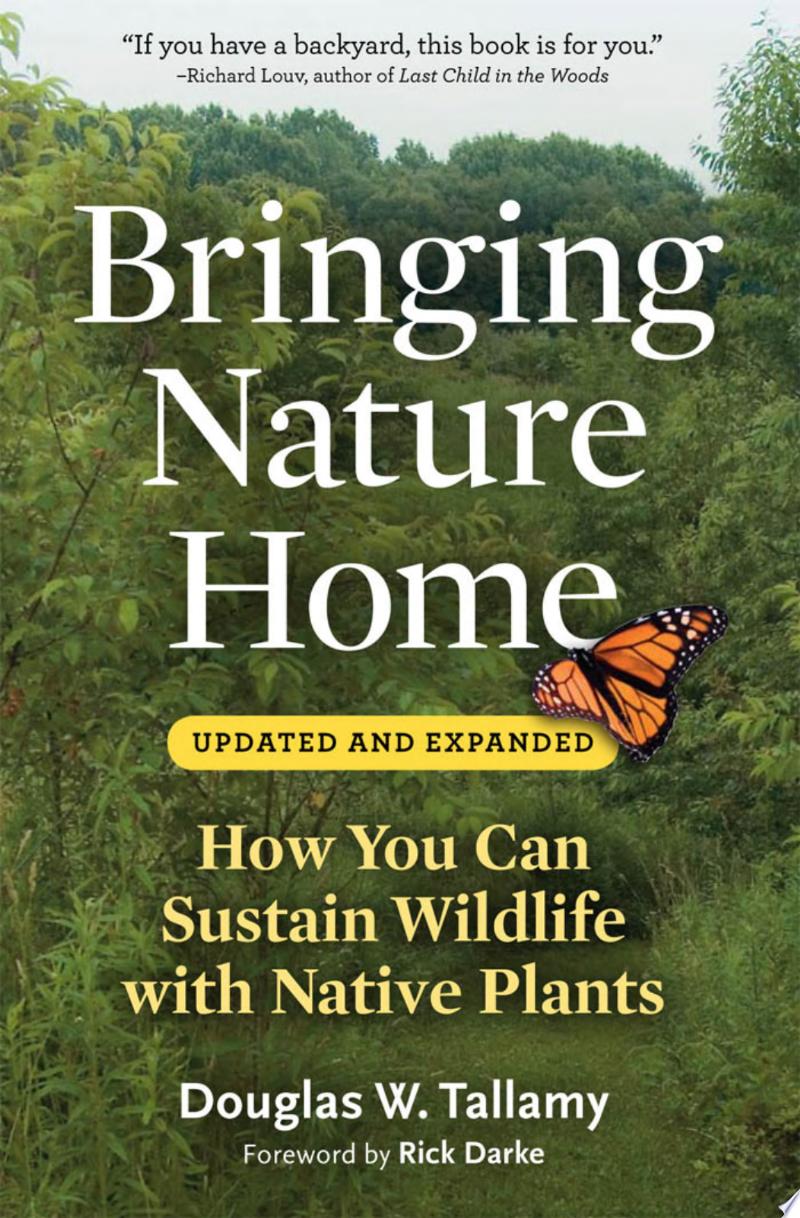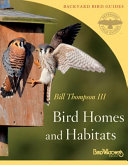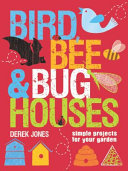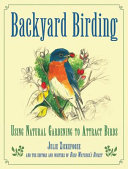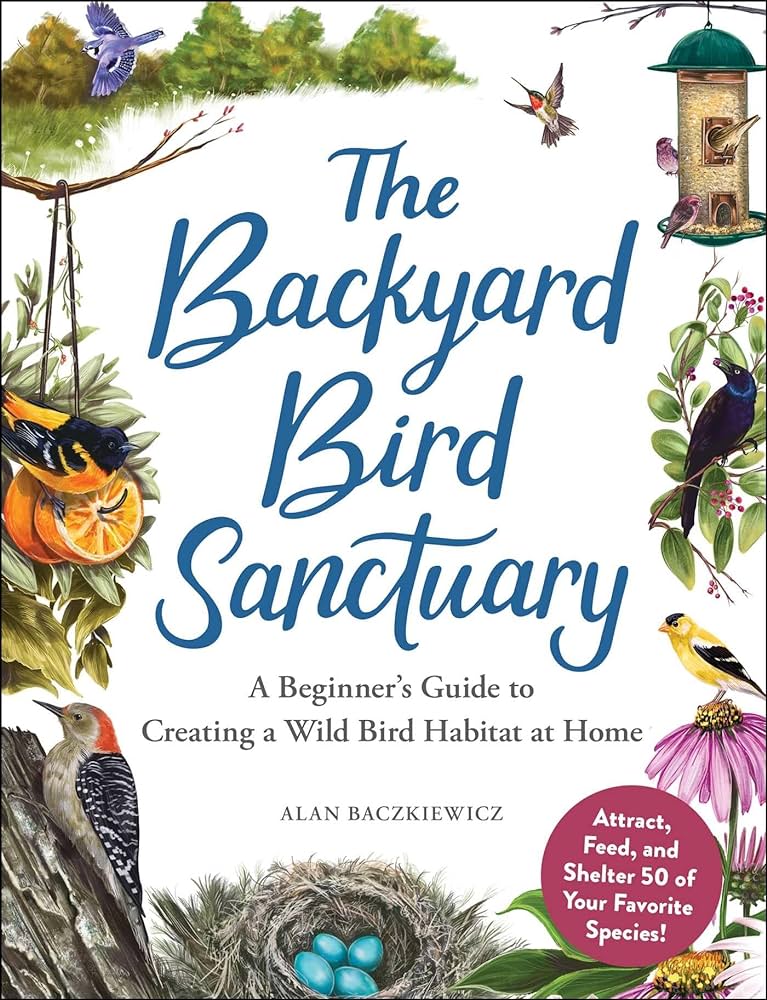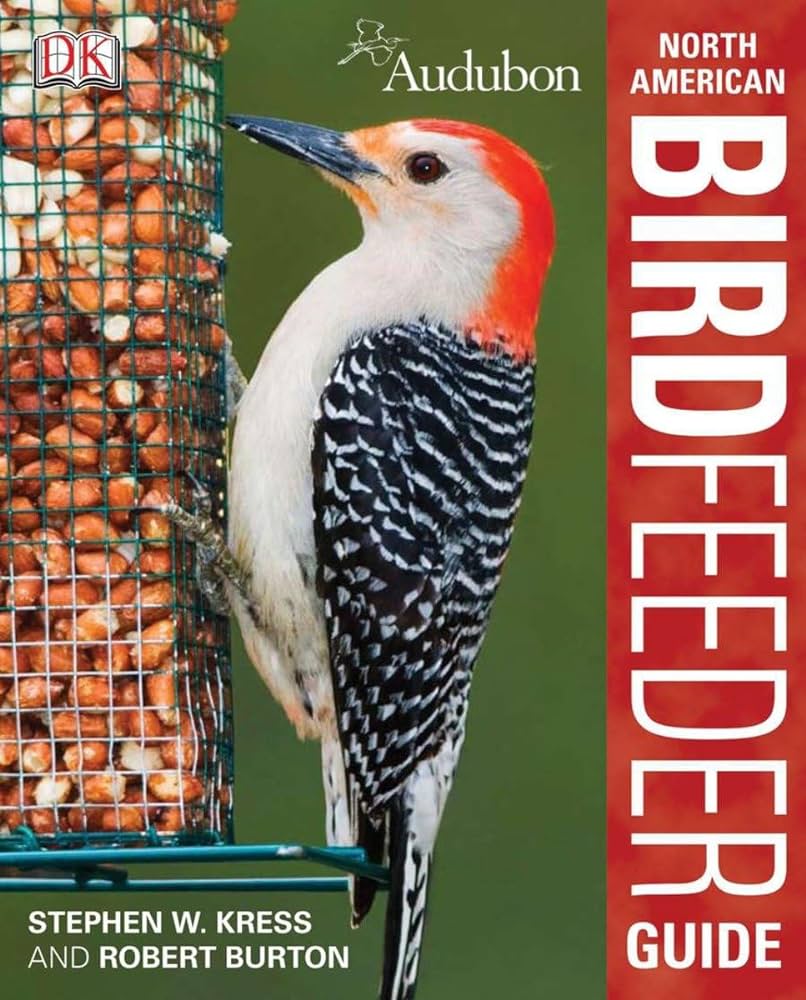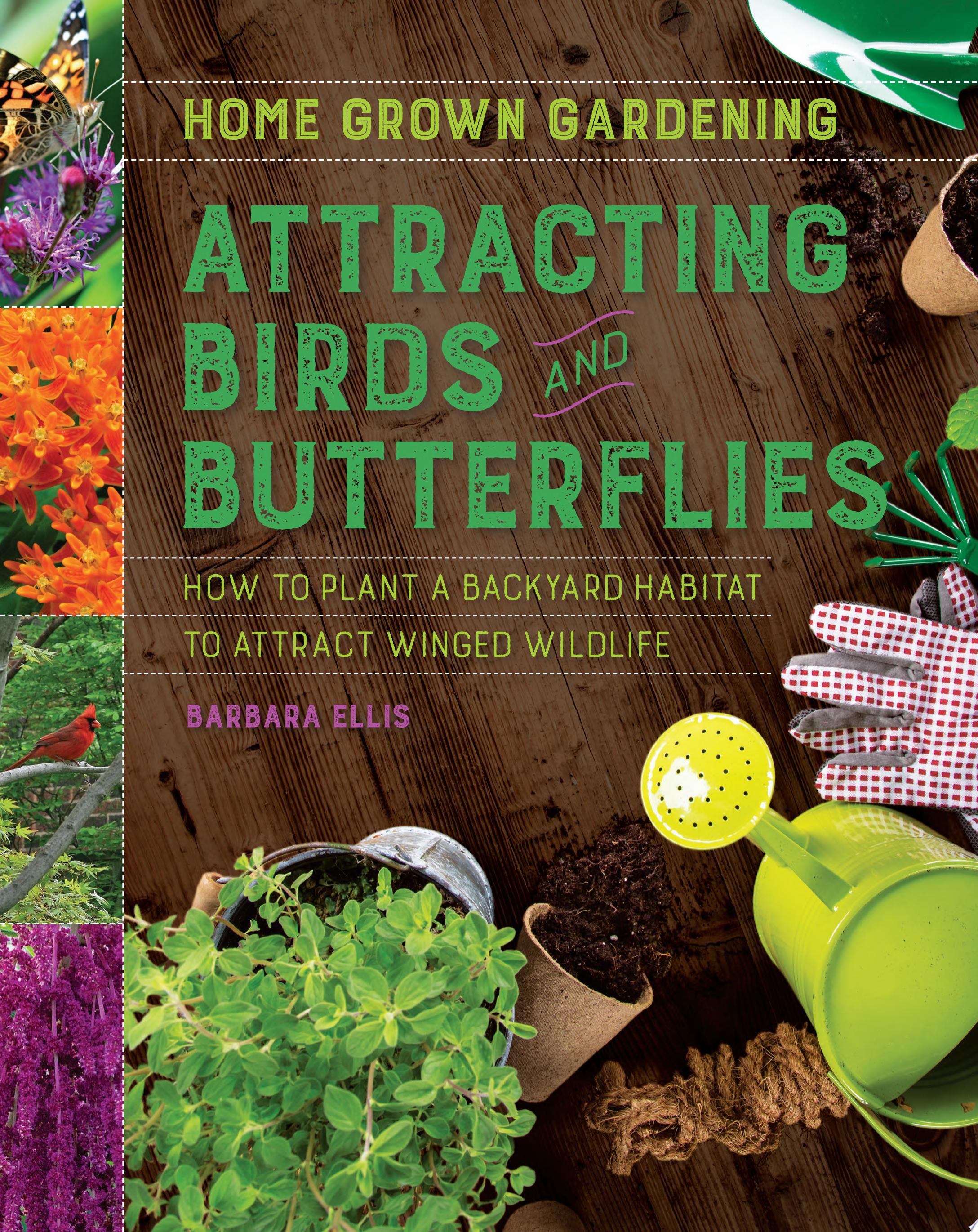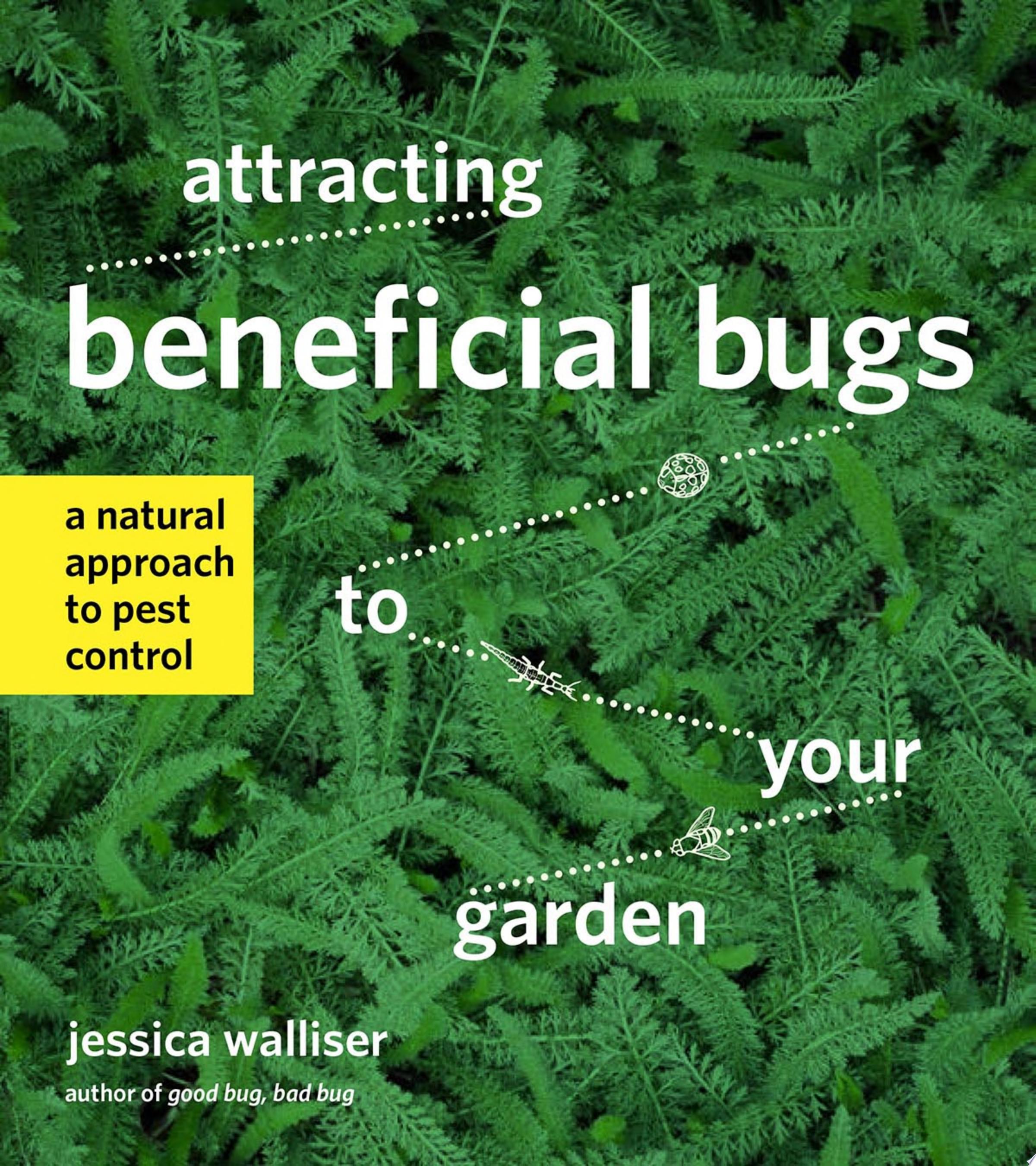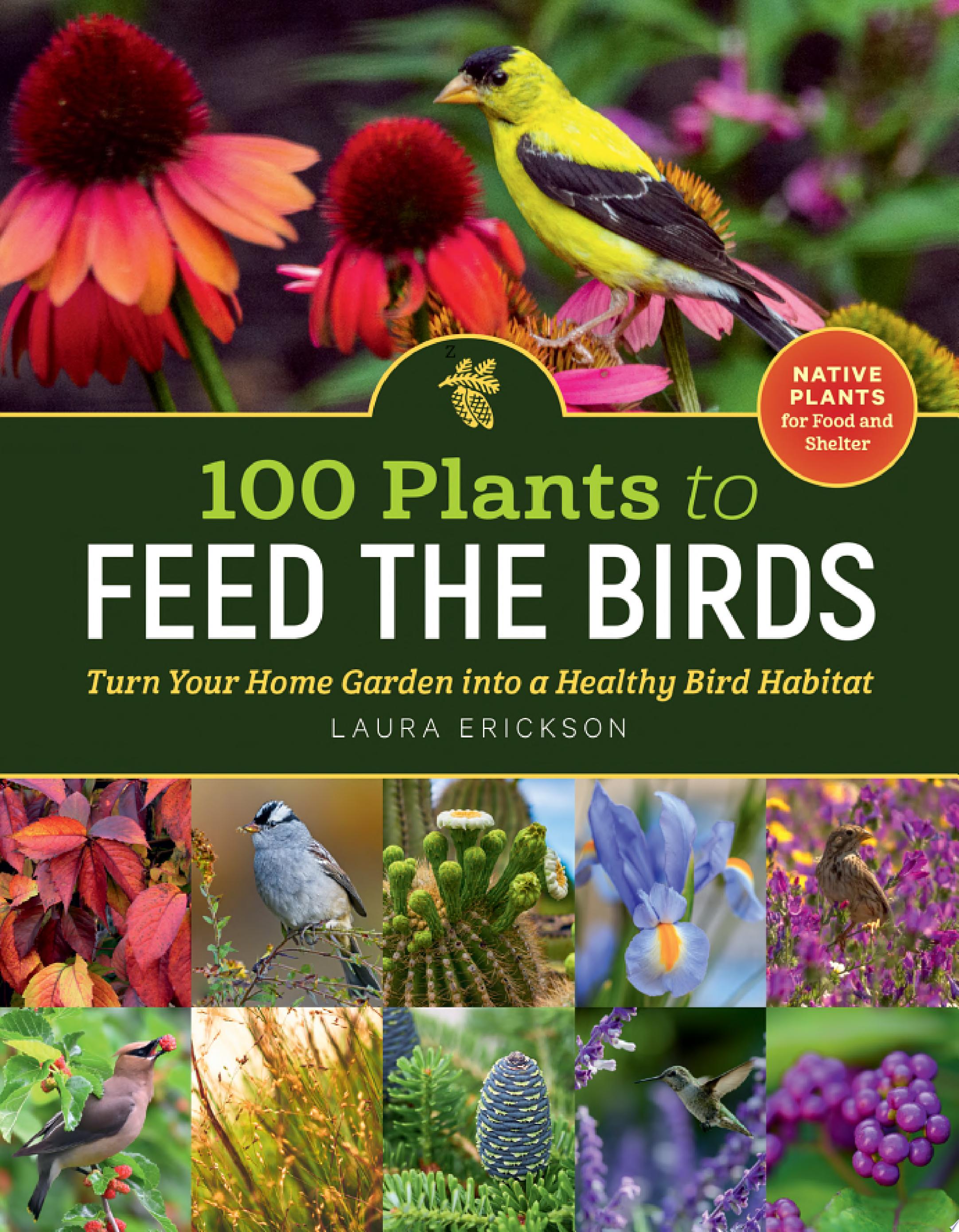Memorial Day Closing
The Library will be closed on Monday, May 27th for Memorial Day. We will reopen on Tuesday, May 28th at 9:00 a.m.
List
The Wildlife-Friendly Vegetable Gardener
Tammi Hartung
This one-of-a-kind book shows you how to create a peaceful co-existence between your vegetable garden and the wildlife who consider it part of their habitat. By understanding and working with the surrounding environment Ð instead of continually fighting it Ð you'll reap a larger harvest with much less stress and effort. Tammi Hartung explains how to start with a hardy and healthy garden, create beneficial relationships through smart planting, attract helpful insects and pollinators, intentionally create habitats for wildlife, and much more.
Nature's Best Hope
Douglas W. Tallamy
“Tallamy lays out all you need to know to participate in one of the great conservation projects of our time. Read it and get started!” —Elizabeth Kolbert, Pulitzer Prize-winning author of The Sixth Extinction
Douglas W. Tallamy’s first book, Bringing Nature Home, awakened thousands of readers to an urgent situation: wildlife populations are in decline because the native plants they depend on are fast disappearing. His solution? Plant more natives. In this new book, Tallamy takes the next step and outlines his vision for a grassroots approach to conservation. Nature’s Best Hope shows how homeowners everywhere can turn their yards into conservation corridors that provide wildlife habitats. Because this approach relies on the initiatives of private individuals, it is immune from the whims of government policy. Even more important, it’s practical, effective, and easy—you will walk away with specific suggestions you can incorporate into your own yard.
If you’re concerned about doing something good for the environment, Nature’s Best Hope is the blueprint you need. By acting now, you can help preserve our precious wildlife—and the planet—for future generations.
Identifying and Feeding Birds
Bill Thompson III
This readable, friendly guide is intended for bird watchers and non–bird watchers alike—for anyone who wants to enjoy nature right in his or her own backyard. The longtime editor of Bird Watcher's Digest and author of numerous books on birds, Bill Thompson III has been feeding and watching birds for forty years. He has tried everything, and here he shares what he's learned so that readers can avoid mistakes and skip right to successful bird feeding. He also debunks common myths about bird feeding: Does feeding birds stop them from migrating? Will birds starve if you leave your feeders empty after the birds have come to rely on them? In an easygoing and lighthearted style, seven chapters cover all the elements needed to attract birds to a backyard (food, water, shelter) and address special cases and problems (keeping bees out of the hummingbird feeder, preventing birds from flying into windows, and much more). The final chapter profiles the 130 species that are most common at backyard feeders. No separate field guide is needed; it's all right here—everything a beginner needs to know to attract birds and then figure out what kind they are.
The Humane Gardener
Nancy Lawson
In this eloquent plea for compassion and respect for all species, journalist and gardener Nancy Lawson describes why and how to welcome wildlife to our backyards. Through engaging anecdotes and inspired advice, profiles of home gardeners throughout the country, and interviews with scientists and horticulturalists, Lawson applies the broader lessons of ecology to our own outdoor spaces.
Detailed chapters address planting for wildlife by choosing native species; providing habitats that shelter baby animals, as well as birds, bees, and butterflies; creating safe zones in the garden; cohabiting with creatures often regarded as pests; letting nature be your garden designer; and encouraging natural processes and evolution in the garden. The Humane Gardener fills a unique niche in describing simple principles for both attracting wildlife and peacefully resolving conflicts with all the creatures that share our world.
How to Create a Wildlife Garden
Christine Lavelle
Most gardeners view themselves as nature lovers, with one of the most enjoyable aspects of creating and maintaining a garden lying in the feeling of closeness to nature. It often comes as a surprise to many, however, that their garden is an essential home.
How to Attract Wildlife to Your Garden
Dan Rouse
Transform your garden into a haven for all kinds of wildlife.
In a world with too much concrete and not enough greenery, every wildlife-friendly garden can make a huge difference. But what if we told you that you can make a difference to your local wildlife from the comfort of your own home? You can help to reverse the decline in bird numbers and much more by creating a haven in which they will thrive!
Let author, presenter, and wildlife conservationist Dan Rouse show you how you can make your outdoor space more welcoming for a wide variety of visitors, from planting pollinator-friendly perennials to digging a pond. Learn the best ways to provide shelter, food, and water, discover the best planting choices and how they can help, then sit back and watch as your garden becomes a much-needed refuge for a huge range of species.
Dive straight in to discover:
- A beautiful mixture of full-color illustrations and photos of different species.
- Practical advice on supporting local wildlife, with ideas suitable for all budgets and abilities.
- Suggestions for beneficial plant choices for a range of climate and soil types.
- Step-by-step projects tailored to both attracting wildlife and to observe the wildlife that visits the garden.
- Ideas for small gardens and outdoor spaces, as well as practical considerations such as pets and children sharing a garden with wildlife.
- Final chapter on ‘Observing garden wildlife’ that showcases low- and high-tech methods of watching for wildlife, and how to connect with the wider wildlife community.
The book features plenty of projects to help you attract and observe your new garden visitors, as well as galleries of common species you can expect to see. Following in the footsteps of its sister title How to Attract Birds to Your Garden, everything in the book is clear, accessible, and engaging, with plenty of budget-friendly tips and ideas suitable for gardeners and non-gardeners alike.
Packed with equal parts expertise and passion, How to Attract Wildlife to Your Garden proves that, by giving nature opportunities to thrive, we all benefit: ourselves, our planet, and the wildlife that may call our garden home.
Garden Allies
Frederique Lavoipierre
"Explains how your garden can be a thriving, balanced community that gives more to your landscape than it takes." —Douglas W. Tallamy, author of The Nature of Oaks and Nature’s Best Hope
The birds, mammals, reptiles, and insects that inhabit our yards and gardens are overwhelmingly on our side—they are not our enemies, but instead our allies. They pollinate our flowers and vegetable crops, and they keep pests in check. In Garden Allies, Frédérique Lavoipierre shares fascinating portraits of these creatures, describing their life cycles and showing how they keep the garden’s ecology in balance. Also included is helpful information on how to nurture and welcome these valuable creatures into your garden. With beautiful pen-and-ink drawings by Craig Latker, Garden Allies invites you to make friends with the creatures that fill your garden—the reward is a renewed sense of nature’s beauty and a garden humming with life.
Butterfly Gardening
Jane Hurwitz
An indispensable and lavishly illustrated guide to creating a garden that attracts and sustains butterflies
Butterfly gardening creates habitats that support butterflies, connecting us with some of the most beautiful creatures in the natural world and bringing new levels of excitement and joy to gardening. In this engaging and accessible guide, lavishly illustrated with more than two hundred color photographs and maps, accomplished butterfly gardener Jane Hurwitz presents essential information on how to choose and cultivate plants that will attract a range of butterflies to your garden and help sustain all the stages of their life cycles.
An indispensable resource for aspiring and experienced butterfly gardeners alike, Butterfly Gardening is the most gardener-friendly source on the subject, covering all the practical details needed to create a vibrant garden habitat that fosters butterflies. It tells you which plants support which butterflies, depending on where you live; it describes what different butterflies require in the garden over the course of their lives; and it shows you how to become a butterfly watcher as well as a butterfly gardener.
While predominantly recommending regionally native plants, the book includes information on non-native plants. It also features informative interviews with experienced butterfly gardeners from across the United States. These gardeners share a wealth of information on plants and practices to draw butterflies to all kinds of gardens--from small suburban gardens to community plots and larger expanses.
Whether you are a gardener who wants to see more butterflies in your garden, a butterfly enthusiast who wants to bring that passion to the garden, or someone who simply wants to make their garden or yard friendlier to Monarchs or other butterflies, this is a must-have guide.
- An essential guide for aspiring and experienced butterfly gardeners
- Encourages readers to rethink gardening choices to support butterflies and other pollinators in their gardens and communities
- Introduces gardeners to butterfly watching
- Includes regional lists of plant species that are time-proven to help sustain butterflies and their caterpillars
- Features informative interviews with expert butterfly gardeners from across the United States
Bringing Nature Home
Douglas W. Tallamy
“A fascinating study of the trees, shrubs, and vines that feed the insects, birds, and other animals in the suburban garden.” —The New York Times
As development and habitat destruction accelerate, there are increasing pressures on wildlife populations. In Bringing Nature Home, Douglas W. Tallamy reveals the unbreakable link between native plant species and native wildlife—native insects cannot, or will not, eat alien plants. When native plants disappear, the insects disappear, impoverishing the food source for birds and other animals.
But there is an important and simple step we can all take to help reverse this alarming trend: everyone with access to a patch of earth can make a significant contribution toward sustaining biodiversity by simply choosing native plants. By acting on Douglas Tallamy's practical and achievable recommendations, we can all make a difference.
Bird Homes and Habitats
Bill Thompson (III)
Two of the best-known names in birding--Peterson and Bird Watcher's Digest--team up to provide reliable, expert advice on how to attract the birds you want into your yard.
Which birds use nest boxes? What's required to maintain a birdhouse? What kind of habitat will attract which birds? What does it take to be a bluebird trail operator? What does it mean if baby birds or eggs disappear from their nest?
Bill Thompson III answers all of these questions and more, helping readers to create yards and gardens where birds will make their homes and raise their young.
It's easy enough to hang a birdfeeder. But there are plenty of other things that can attract birds to a landscape--and, in fact, birds need four essentials: food, water, shelter, and a place to nest. The more of these elements a yard has, the more attractive it is to birds.
A lavishly illustrated chapter provides ideas and inspiration for creating bird havens by profiling "Birdy Backyard All-Stars," fifteen homeowners from around the country who have actively worked to create bird-friendly habitats.
Bird, Bee & Bug Houses
Derek Jones
Transform your garden into a wildlife haven bursting with life by learning how to provide supplementary nesting sites to a host of creatures. Bird, Bee & Bug Houses explains all you need to know about how to create the perfect nesting place for a wide variety of species including birds, bats, butterflies, lacewings, ladybugs, and rare solitary bees. Essential pollinators, predators and seed-spreaders, many of these species are threatened from intensive farming and the spraying of harmful chemicals. But, we can help them by building these safe havens in our gardens.
These unique and quirky houses can be created with only a few basic woodworking skills. A range of materials (some recycled or scavenged) and finishes are used in order to make sure they are as attractive as they are practical. All the basic techniques, tools, and materials needed to create your bird, bee, or bug house are explained and each project has a detailed exploded diagram with cutlist. Each section of the book has detailed information on choosing locations, maintenance, species' habits, and nesting requirements.
Backyard Birding
Julie Zickefoose
A Practical Illustrated Bird-Oriented Gardening Book with Great Reference Charts
Bird-watchers everywhere dream of a landscape dotted with fruiting shrubs, nests tucked into twining vines, and birds flocking to feeding stations. Let Natural Gardening for Birds show you how to lay out the welcome mat for birds by considering all of their needs, including year-round food, water, and shelter. Whether you're looking to create a hummingbird garden, install a water feature, create alluring perches, or simply designate a corner of your property as a natural area, you'll find all the inspiration and information you need in Natural Gardening for Birds, including:
The best plants for nectar, fruit, and seeds
The most attractive foods to offer birds
Housing for cavity-nesting birds
Simple habitat enhancements like snags and perches
Region-specific planting ideas and charts
The Backyard Bird Sanctuary
Alan Baczkiewicz
Identify beautiful birds right in the comfort of your backyard with this illustrated, easy-to-use introductory guide to birding.
Ever wonder how to attract beautiful birds right to your backyard? Now you can create a bird-watching paradise with this accessible guidebook that teaches you everything you need to know about welcoming your new feathered friends and how to care for them while they’re visiting.
Backyard Bird Sanctuary helps you attract fifty of the most common and sought-after birds in the United States. With beautiful, full-color illustrations of both the male and female of each species, you’ll have no trouble identifying your new companions. Inside you’ll find everything you need to know about welcoming these birds into your yard including:
-Preferred types of food and feeder
-Nesting and brooding habits
-Range and migratory patterns
-Effective techniques for attracting birds
-Ways to provide shelter
-And so much more!
With tips and advice for any sized yard—even a small patio or balcony—you can enjoy the beauty of wild birds wherever you live. Now you can surround your home with cheerful bird songs and beautiful plumage all year long!
Audubon North American Birdfeeder Guide
Robert Burton
Produced in association with the National Audubon Society, the North American Birdfeeder Guide covers the best ways to attract, observe and feed birds in your own backyard. From profiles of individual species to understanding bird behavior, this is the only book you'll need to master the art of bird watching.
Attracting Birds and Butterflies
Barbara Ellis
A quick-reference guide to attracting birds and butterflies for gardeners with little experience and time.
In the eye of a bird or butterfly, the typical suburban landscape resembles an unfriendly desert. Closely mowed lawns, tightly clipped shrubs, raked-up borders, and deadheaded flowers mean no place to nest, no food to eat, and nowhere to hide. To the humans who live there, this means no bird songs, no colorful butterflies, no dazzling hummingbirds, no night-sparkling fireflies.
Creating a garden that welcomes these creatures may seem like a confusing and complicated task, but the principles involved are relatively simple. Essentially, wildlife needs food, water, and shelter, just like we do, and this lavishly illustrated guide shows which plants attract which creatures, and how to plant and care for them.
Attracting Beneficial Bugs to Your Garden
Jessica Walliser
Winner of the American Horticultural Society Book Award
Insects are indeed valuable garden companions, especially the assassin bugs, damsel bugs, stink bugs, and other predatory carnivores that eat the insects that dine on your garden. Attracting Beneficial Bugs to Your Garden is a book about bugs and plants, and how to create a garden that benefits from both. In addition to information on companion planting and commercial options for purchasing bugs, there are 19 detailed bug profiles and 39 plant profiles. These profiles include a description, a photograph for identification, an explanation of what they can do to support pest control. Design plans show how to create a border specifically for the natural, sustainable inclusion of beneficial bugs in your garden.
100 Plants to Feed the Birds
Laura Erickson
The growing group of bird enthusiasts who enjoy feeding and watching their feathered friends will learn how they can expand their activity and help address the pressing issue of habitat loss with 100 Plants to Feed the Birds. In-depth profiles offer planting and care guidance for 100 native plant species that provide food and shelter for birds throughout the year, from winter all the way through breeding and migrating periods. Readers will learn about plants they can add to their gardens and cultivate, such as early-season pussy willow and late-season asters, as well as wild plants to refrain from weeding out, like jewelweed and goldenrod. Others, including 29 tree species, may already be present in the landscape and readers will learn how these plants support the birds who feed and nest in them. Introductory text explains how to create a healthy year-round landscape for birds. Plant photographs and range maps provide needed visual guidance to selecting the right plants for any location in North America.
This publication conforms to the EPUB Accessibility specification at WCAG 2.0 Level AA.
